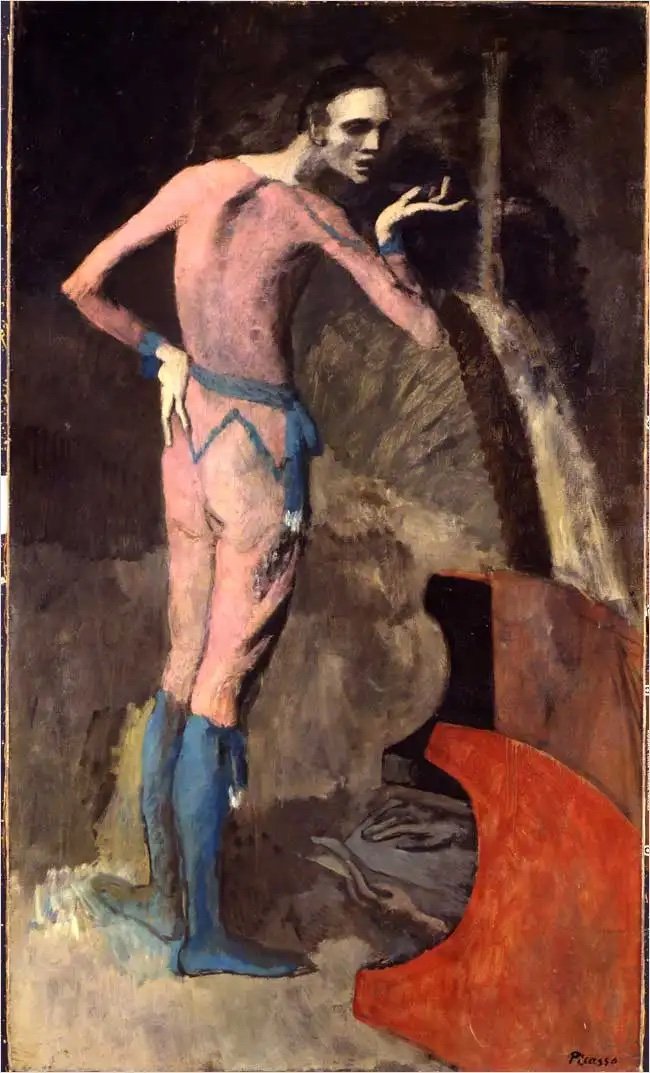Everything’s Coming Up Roses: Picasso’s Early Work (1904-1906)
Long before he became the legendary artist we know today, an 18-year-old boy named Pablo Picasso arrived at France’s Orsay train station with his friend, the young Catalan painter Carles Casagemas. The two young painters immediately joined the Paris art scene and in 1901, Picasso made his debut exhibition with the influential dealer Ambroise Vollard.
The artist’s French honeymoon quickly cooled that same year, when Casagemas tragically died, marking the beginning of what’s now referred to as Picasso’s austere Blue-Period. A somber, three-year depression pushed the broke artist on the road to paint prisoners, drunks and beggars between Barcelona and Paris. He also solely worked in shades of blue, sapphire and ultramarine – and often featured elongated portraits of Casagemas in his coffin.
In 1904, Picasso met his muse and mistress, the French artist Fernande Olivier – a bohemian partially credited for inspiring the artist’s return to warm colors. A formative time for the struggling painter, Picasso grew fascinated with Montmartre's Cirque Medrano, a longstanding fairground featuring the likes of circus freaks, trapeze artists, actors, musicians and dancers. Being around kindred spirits and outcasts marked the beginning of Picasso’s two-year Rose-Period – an optimistic study of entertainers in meditative moments.
Although blue tones were still present, the artist contrasted them with warmer shades and rustic tones. The Actor (1904) documented a slim actor in a rose-pink leotard rehearsing behind the scenes while his Family of Saltimbanques (1905) featured a close-knit family of artists with blank stares against a cloudy sky mixed with a pale beige, brown and dusty rose background. This famed linear style – where dark contours outline the figures – would become more pronounced in the artist’s later work.
In the striking Boy with A Pipe (1905) portrait, Picasso painted a young boy wearing a floral garland and holding a pipe with a dreamy expression (you’ll also notice soft shades of peachy pink). The teen boy, known as “little Louis” was known to hang around the artist’s studio in Le Bateau-Lavoir. Often, Picasso cleverly inserted himself in the paintings as a playful harlequin, or a comedic pantomime with a masked face and tights. “Are we to paint what’s on the face, what’s inside the face, or what’s behind it?,” Picasso once asked.
In the summer of 1906, Picasso traveled to the small Spanish village of Gosol. This marked the end of the Rose Period and a special time of creative frenzy as Picasso produced a staggering 300 works – mostly centered around rural life and using influences from Iberian art and the works of Cezanne and Gauguin.





